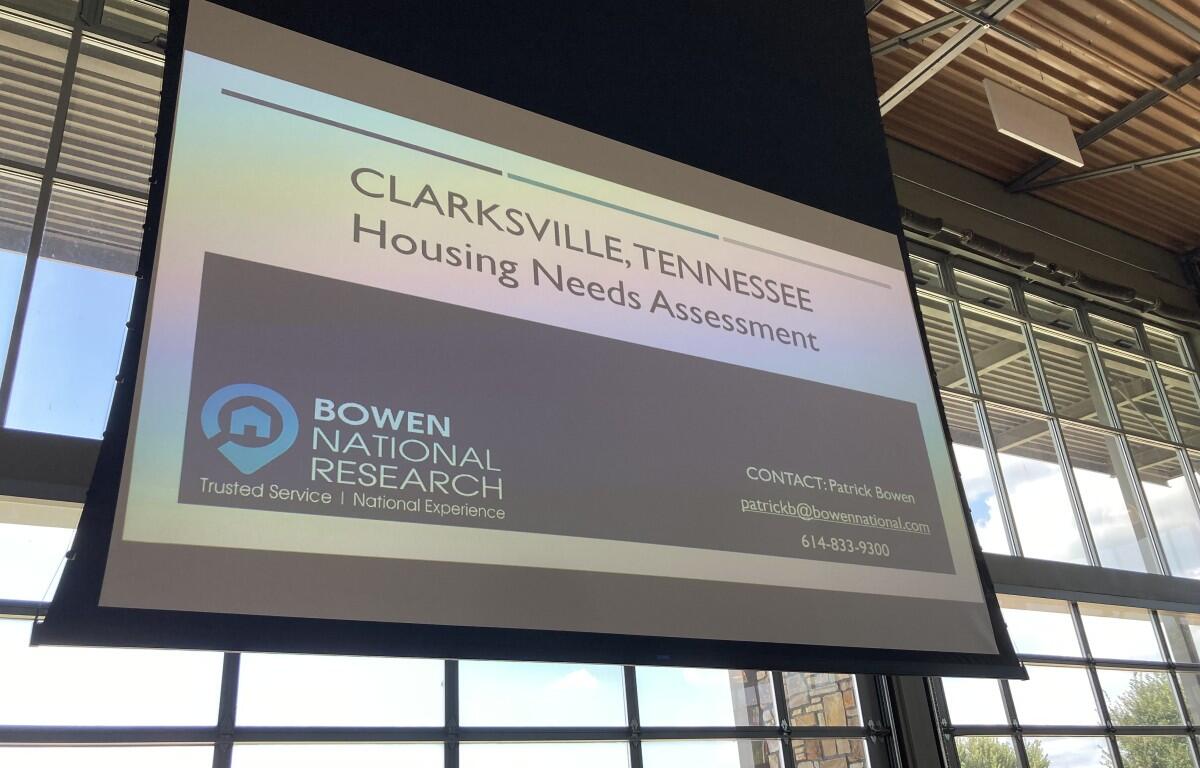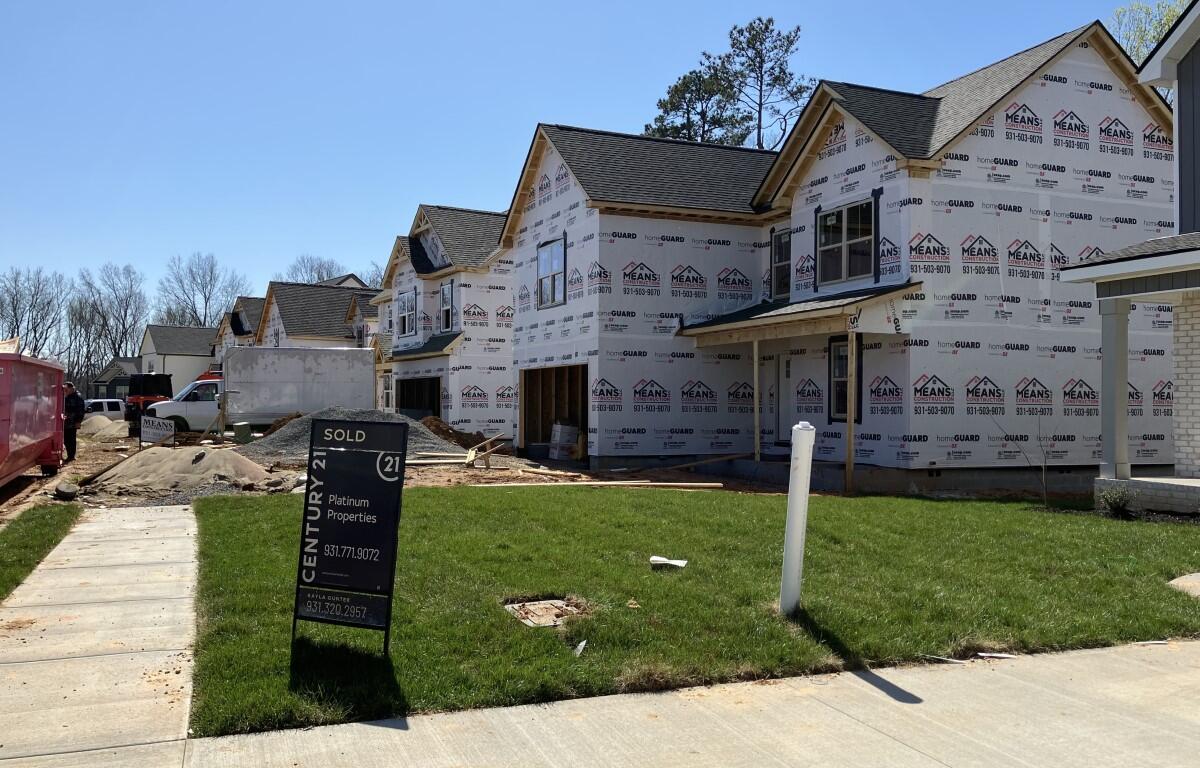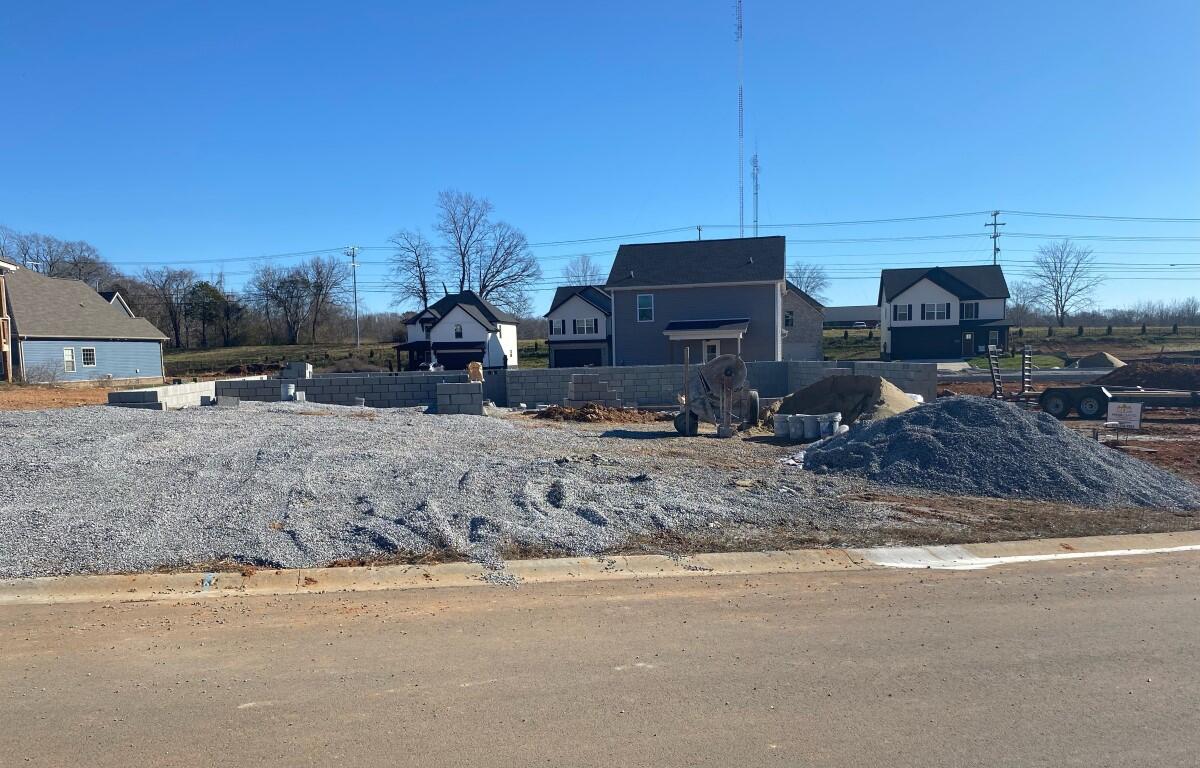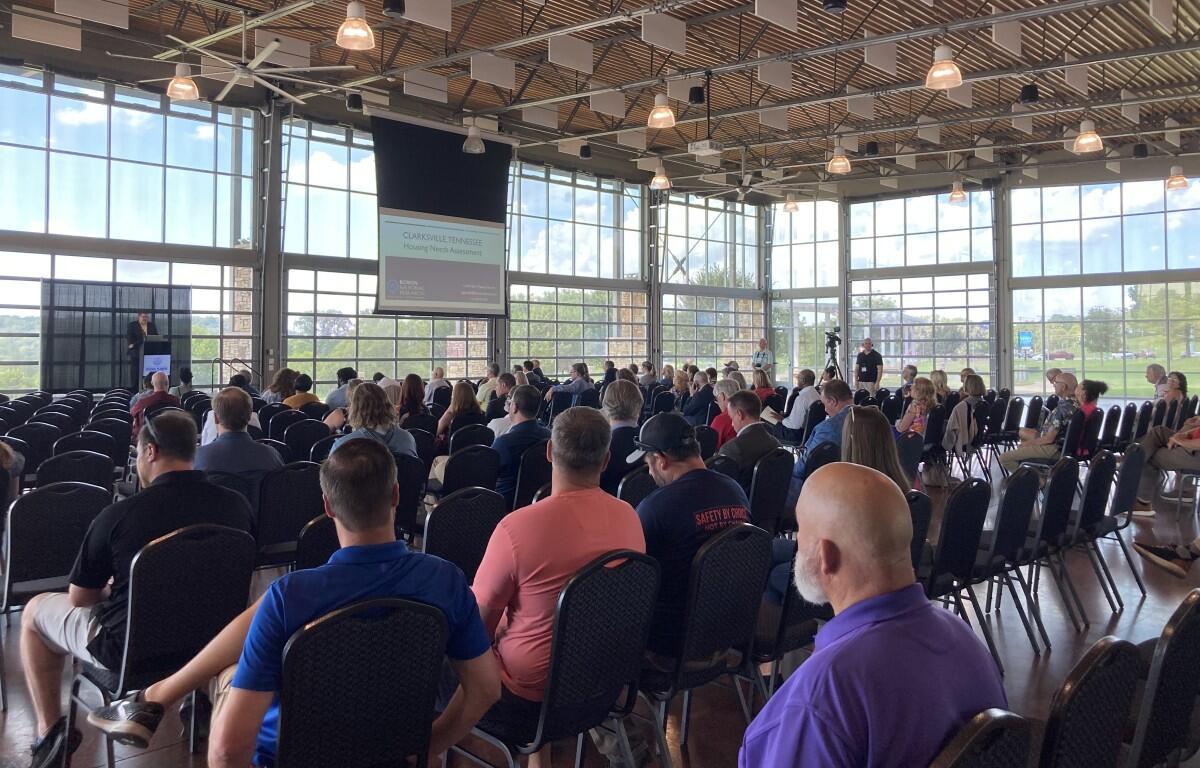CLARKSVILLE, TN (CLARKSVILLE NOW) – Over the next five years, Clarksville will need to add 15,000 more homes, in both rentals and single-family houses, and at a variety of affordability levels. About 7,600 housing units will be needed just to “tread water.”
The Clarksville-Montgomery County Regional Planning Commission, alongside Clarksville Neighborhood and Community Services, commissioned the services of Bowen National Research to conduct a Housing Needs Assessment, and the results were released this week. The study recommends expanding affordable housing, improving housing quality, revising zoning codes for a more sustainable market, and coming together as a community.

Montgomery County growing 5,000-6,000 people per year
BNR President Patrick Bowen provided the results during an event on Tuesday at the Wilma Rudolph Event Center. RPC Director Jeffrey Tyndall told the crowd what led to the research being conducted in the first place, which was the city and the county adopting their Comprehensive Plan.
“It has a list of strategies of things we can do in our community for the next 20 years. We tried to attack some of the low-hanging fruit right off the bat, with one of those things being introducing a Housing Needs Assessment,” Tyndall said. “There’s no denying that Clarksville the last five to six years has been at such an upward tick in development, more than we’ve seen at any point in our history. So, we had to get a better handle on what is the type of growth we’ve seen and where’s our community going.
“I have a 16-year-old – I don’t know where he’s going to live in six or seven years.”
RPC Director Jeffrey Tyndall
“We’re growing 5,000-6,000 people a year both in the city as well as in the county. A couple of years ago we grew more than Metro Nashville. Clarksville was the No. 1 growing city in the state. And it’s a badge we carry with pride, but it’s also a burden for us as a smaller city. There’s a lot of things we need to play catch-up on. We have to have the services to go with it, and our housing, just like Nashville or Gallatin or Mount Juliet … our housing has seen the same 60-80% increase in just the last several years; to the point where, I have a 16-year-old – I don’t know where he’s going to live in six or seven years,” Tyndall said.
Bowen touched on the research that went into the assessment and some of its findings, which ranged from widespread affordability issues to scarcity of affordable for-sale homes to subsidized rental properties remaining at capacity.

Housing needed: ‘You don’t want to tread water’
Bowen said his company has completed around 120-130 Housing Needs Assessments throughout the nation, so they’ve seen what other markets are dealing with, as well as how they’re responding to various levels of growth. Bowen said households drive housing demands in communities, so he presented attendees with a line graph that shows Clarksville’s household growth trends since 2010, while also showing predictions leading up to 2029.
“You’ve been growing a lot; you’ve added almost 12,000 households between 2010-2020,” Bowen said. “You’re expected to add another 7,600 households, so, at a minimum, the city needs another 7,600 housing units just to tread water. You don’t want to tread water, though. You have some housing challenges, you have some shortages, you have some quality issues, you have affordability issues, so you need more than just those 7,600 units. But that’s where we start.”
Clarksville housing supply analysis
While Bowen’s research shows that despite the generally affordable nature of the Clarksville area relative to the state of Tennessee, many households remain cost-burdened.
Although the median home value and average gross rent figures for Clarksville are lower than or very similar to statewide figures, the median household income within the city ($67,372) is approximately 4% lower than the median household income statewide ($70,165), said the assessment. This likely contributes to the shares of cost-burdened renter (43.6%) and owner (20%) households within Clarksville, which are slightly higher than statewide shares (43.4% and 17.9% respectively).
| NEW TO CLARKSVILLE? Check out our Newcomer’s Guide
Furthermore, the study said that nearly 18% of Clarksville renter households and 8% of owner households are considered severely cost-burdened, which means those individuals are paying more than 50% of their income towards their housing costs. “This results in 5,447 renter- and 3,073 owner-households within the (Clarksville area) that are paying more than 50% of their income towards rent. These are good indications of an ongoing need for affordable housing alternatives within the Clarksville area,” said the assessment.

Overall 5-year housing gap of 15,193 units
In addition to an ongoing need for affordable housing, Clarksville needs more housing in general. One conclusion Bowen National Research came to was that Clarksville has an overall five-year housing gap of 15,193 units for both rental and for-sale homes at a variety of affordability levels. Bowen’s reports projects that Clarksville has a rental housing gap of 6,598 units and a for-sale housing gap of 8,595 units.
“While there are housing gaps among all affordability levels of both rental and for-sale product, the rental housing gap is greatest for product with rents between $1,607 and $2,409 while for-sale housing gap is greatest for product priced $321,201 or higher,” said the assessment.
While numerous single-family home developments are planned or proposed in Clarksville, they were not considered in Bowen’s calculations as it is unknown how many homes will ultimately be built or purchased. However, Bowen National Research said that it will be important for local officials, developers, lenders, and other end users of this report to monitor the impact of the developments.
Recommended housing strategies
Bowen National Research presented the Clarksville community with several recommended housing strategies, which included setting realistic and attainable short-term housing goals, while also outlining long-term objectives and monitoring progress.
Their assessment also recommends considering establishing a housing committee and/or hiring a housing director to help define and implement housing policies, programs and goals for the city.
| NEWS TIPS: Do you have a local news tip? Email news@clarksvillenow.com or call us at 931-648-7720.
Here are the additional recommendations:
- Consider implementing or modifying policies to encourage development of new housing and the preservation of existing housing.
- Formulate education and outreach campaigns to help support housing initiatives.
- Explore and encourage development partnerships.
- Market Clarksville’s housing needs and opportunities to potential residential development partners and develop a centralized housing resource center.
- Consider implementing a marketing plan and developing housing that will attack some of the more than 25,000 commuters that travel into the city to become permanent residents.

‘Availability rate of 1.4%, which is below the normal range’
The analysis said that overall, there is a relatively limited amount of housing available for purchase in Clarksville, which may present an opportunity to develop additional for-sale housing.
Based on sales history between January 2020 and July 2024, Clarksville has an absorption rate of approximately 296 homes per month. The homes listed as available for purchase in the area represent approximately 1.8 months of supply. A healthy and well-balanced markets should have an available supply of 4 to 6 months.
The Clarksville area has 526 available housing units, and an overall inventory of 38,418 owner-occupied units, for a vacancy/availability rate of 1.4%. That’s below the normal range of 2% to 3% for a well-balanced and healthy for-sale/owner-occupied market. The study said that “can contribute to a rapid increase in home prices and impede household growth in an area.”
Wait list for affordable, market-rate properties
When it comes to affordable multifamily housing, Clarksville’s Tax Credit and government-subsidized housing has an overall occupancy rate of 100%, while the market-rate properties are 96.3% occupied. Essentially, both are full.
In healthy and well-balanced markets, multifamily rentals operate at an overall occupancy rate between 94% and 96%. However, the Clarksville multifamily rental market has limited availability with a 96.7% overall occupancy rate.
| DON’T MISS A LOCAL STORY: Sign up for the free daily Clarksville Now email newsletter
They also are under waiting lists, with nearly 70% of the affordable properties and just over 18% of market-rate properties maintaining waiting lists for their next available units.
“Many of the multifamily properties … are relatively modern as more than half (50.6%) of the market-rate and Tax Credit units surveyed have been built since 2010, and more than 61% units built since 2010 were built within the last four years (2020 to 2024). Considering the preceding factors, strong and pent-up demand exists for various types of multifamily rental product.”
The housing supply analysis also touched on:
- Non-conventional rental units, such as houses, duplexes and mobile homes, represent a large portion of the overall housing market within Clarksville.
- Despite a decline in annual home sales volume, the median sales price increased within the PSA in 2023.
‘You need to organize as a community’
Bowen posed a question to the community in attendance: Where do you start?
“Who’s leading the effort?” Bowen asked. “Is that the city or the county government issue? I don’t think it is. They need to be a part of it, but you need to organize as a community. Again, there’s a lot of ways to do that … but someone has to spearhead this and say, ‘Hey these are our priorities.’ Now, let’s go to our elected officials and the other decision makers and say, ‘This is what we think we should be doing.'”
To view the complete Housing Needs Assessment by Bowen National Research, click this link.
| NEWS ALERTS: To get free breaking news alerts on your phone, text the word NEWS to 43414.


